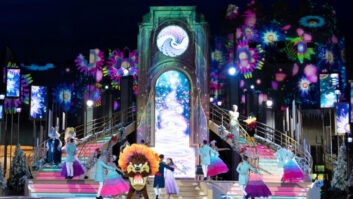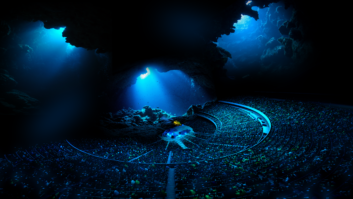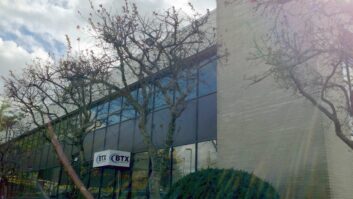
Paul Kent, senior consultant at Electrosonic, reveals how theme park technology has developed over the years, with technology trends such as laser and AR/VR now having an impact.
How has the technology requirement in theme park installs changed over the last few years?
Technology is just one of the tools designers and storytellers can utilise to bring a story to life. The requirement for technology has not changed over the last few years, it has always been there. The amount of automation in parks and attractions has always been high and demanding on the systems design and operation. Parks expect attractions to run and be operational during all the hours that guests are in the park. The biggest change has been technology becoming more network based and flexible. Until recently the control and replay systems were to an extent custom made and built for a specific attraction.
That said, in recent years the ability to deliver systems that can have real-time redundancy and fail over has been significantly increased. The ability not to monitor all equipment for upcoming potential failure of everything from computer drives to projectors has a direct impact being able to achieve this constant run time. In all we have seen a real increase in the quality of equipment not just in terms of quality of output in audio and video but also in the manufacture of the equipment.
What does an integrator need to do to ensure a theme park project is successful and profitable?
This stems from a good design and management method from the outset. Working with the creative and operational teams to ensure that a commonality of parts and manufacturers is utilised, either to match what the park already has as standard systems or when designing complete parks that this palate of manufacturers is used where practical across the design. Attractions typically have a 5 -10 year life cycle to achieve a good return on investment so an element of future-proofing must be part of the process. The use of real-time monitoring and auto alignment has led to the increase of more complicated systems such as projection systems, where it is possible now with auto alignment for this to not necessarily add to the technical staffing burden.
The theme park sector is known for being at the cutting-edge of new technologies, does that make it a particularly exciting market to work in?
The market as a whole is an exciting market, that is the nature of the final product. As the expectation is always for final output that drives the guest experience higher. As rides and systems are designed ahead of possible changes in technologies it does make for some interesting meetings, as everyone wants stable and reliable systems. Or in some cases where has this been done before? What makes the projects interesting is for the whole team to take on the concept of the ‘this is a new thing’ and work together with the manufacturers and suppliers to create the new thing.
What are some of the emerging technology trends you are seeing across the theme park sector?
The change to ‘lamp-less’ technology is a big driver at the moment, with the changes for lighting and projection sources to LED and laser. The quality increase in projection sources and images to 4K and higher, combined now with true high-end sound design and implementation is a new trend. The move into real-time reaction to media and customisation of software and experience to groups of visitors is now driving the market, and again we are looking at associated technologies for other industries to bring this to life.
The increased expectation for your environment to be ‘stunning’ is also there as a park attraction needs to be levels above what you would expect to see/feel at your local Cineplex or even at home. The use of multiple person or group AR/VR will play a part in park attractions in the future, we are already seeing it on coasters and in smaller midway attractions. As the technology improves and becomes more robust and storylines that involve group experiences expand then this will make its way into the mainstream attractions.
How is the greater emphasis on interactivity and immersive environments in theme parks reflected in the AV technology being utilised?
The technologies available now are helping increase the amount of interactivity within attractions, however technology has always been part of the immersive experience from the very first parks, large format projection animatronics and their link to the ride or the automated show have always been part of the total guest experience. The ability now to offer more where needed is helping to add another layer where needed to the attractions.







